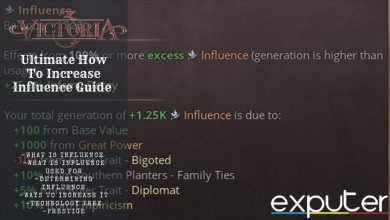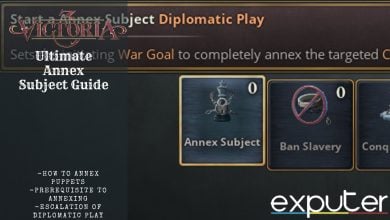The process of unification exists in Victoria 3 and it is presented in the game with great detail. It refers to the process by which one nation is transformed into another nation. This newer nation is usually bigger in size as well. Historically speaking, there have been quite a few examples of unification. One such example would be the unification of Italy in the 17th century, the same era that the game is set in.
In Victoria 3, there are two types of unification:
-
Regular Unification:
- Involves creating a specific nation, achievable by various nations.
- Prerequisites include a matching primary culture, control over most integral state regions, a lower tier level than the target nation, and unlocking specific technologies.
-
Major Unification:
- Involves significant nationalist movements.
- Only major powers can participate, with up to three candidates available.
- Other nations can support candidates to improve relations.
- Diplomatic actions like National Leadership and Unification are available to players.
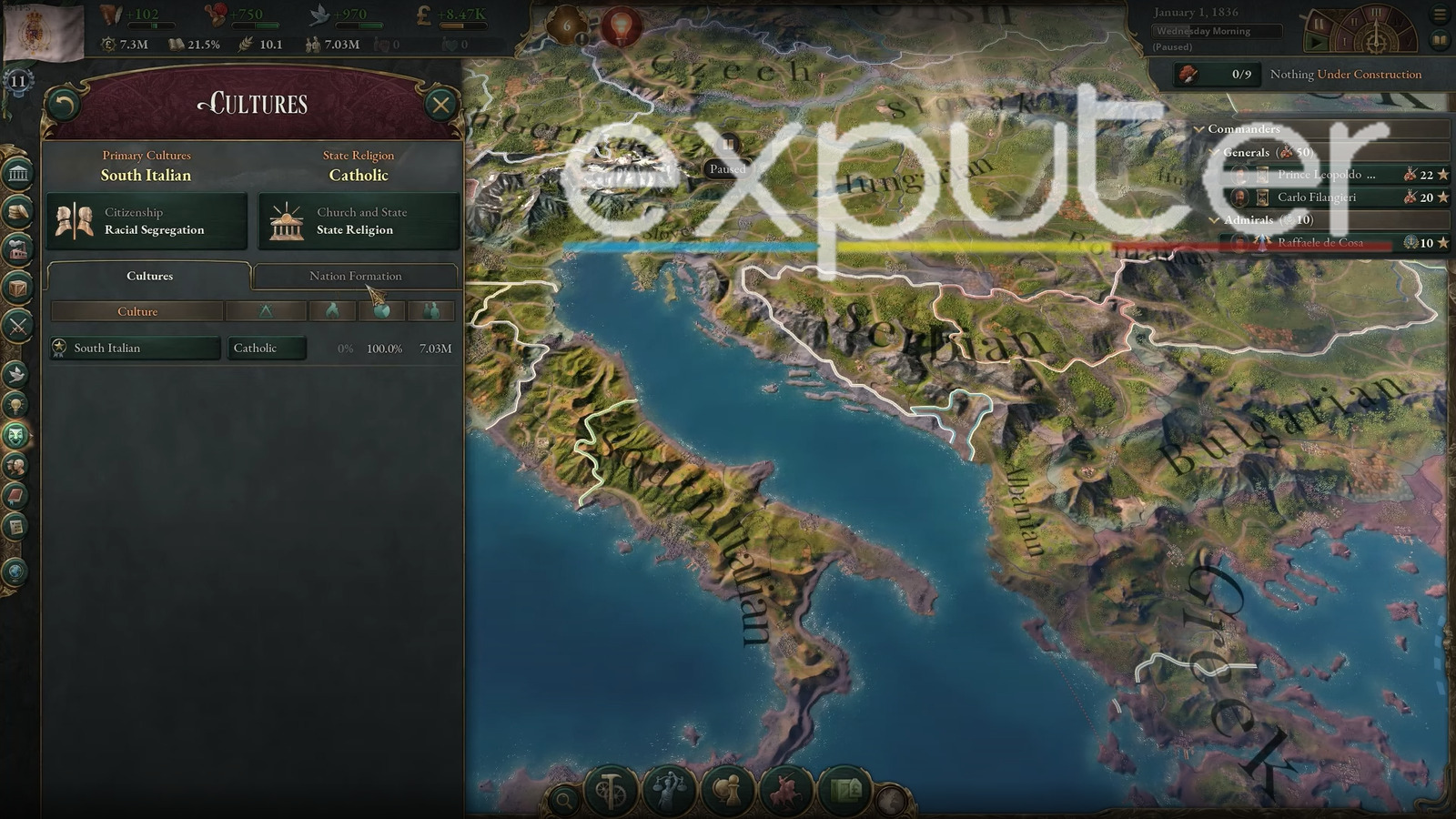
In the unification of Italy, many small nations in the Italian Peninsula were consolidated into a greater Italian Kingdom. When talking about unification, there are two types that you need to keep in mind.
They are as follows:
- Regular Unification
- Major Unification
Regular Unification
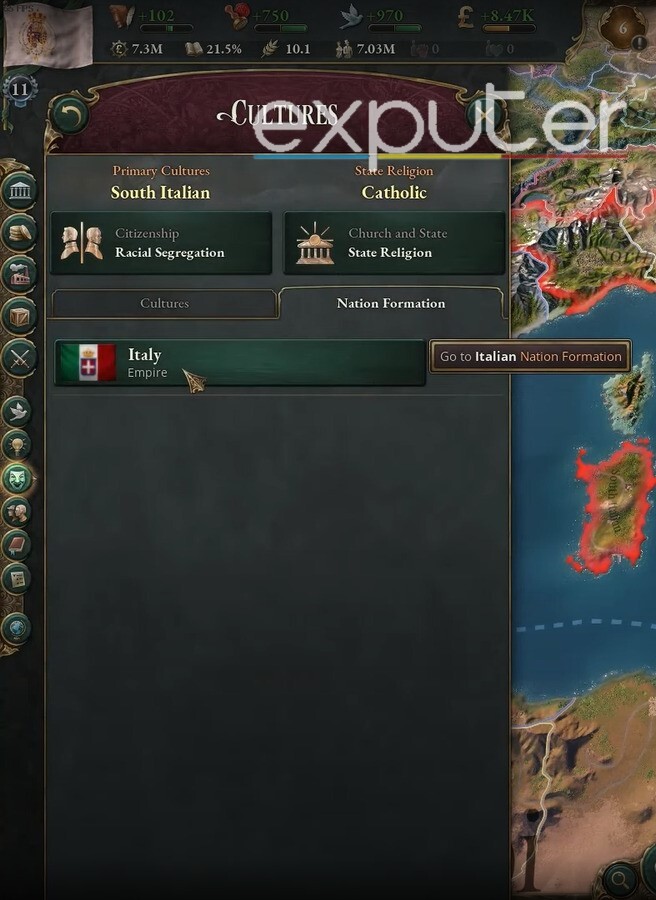
Regular unification in Victoria 3 refers to the creation of a specific nation by other nations, whether historically existed or not, within the game’s time period (set during 1836). This concept involves forming nations like Poland, which existed before 1836, or nations like Germany, which came into being after 1836. It also includes alternative-history countries like Arabia and countries that already existed in 1836, such as the Central American Provinces. Players can conquer these countries and, if they break up, reunify them. Here are the conditions for regular unification:
-
Primary Culture: The unification country must share one primary culture with the country that is forming it. For example, any country with Indian as part of its primary culture can form India.
-
Tier: The forming nation must have a lower tier level than the unified country. Tiers are assigned based on historical influence and social ranking.
-
Sovereign: The forming nation must be the sovereign state over a majority of the integral state regions that will form the unification country. The cultural homelands of the primary culture must be under the control of the forming country.
-
Technologies: Some unifications require specific technologies as prerequisites. These technologies must be unlocked before performing the regular unification.
To perform regular unification, you must meet all of these conditions. Look for the “Form X” option in the menu, where “X” represents the name of the unification country. Clicking on this option will transform the forming nation into the unified country, merging the pops that share the primary cultures to create the unified nation. Regular unification allows you to rule over nations and control their integral state regions with less infamy than conquering them through war, making it a strategic option in Victoria 3.
Major Unification
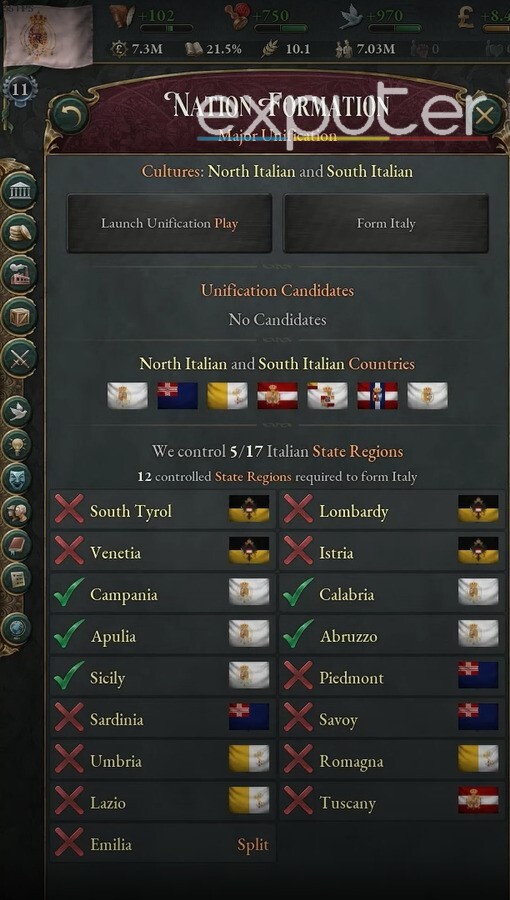
This is the other type of unification that you can perform in Victoria 3. It is a bit different than the other unification which I just discussed. Major unifications refer to the nations that had significant nationalist movements behind their creations, historically speaking. Nations like Germany and Italy fall into this category. At the beginning of the game, this unification differs slightly.
Unification Candidates
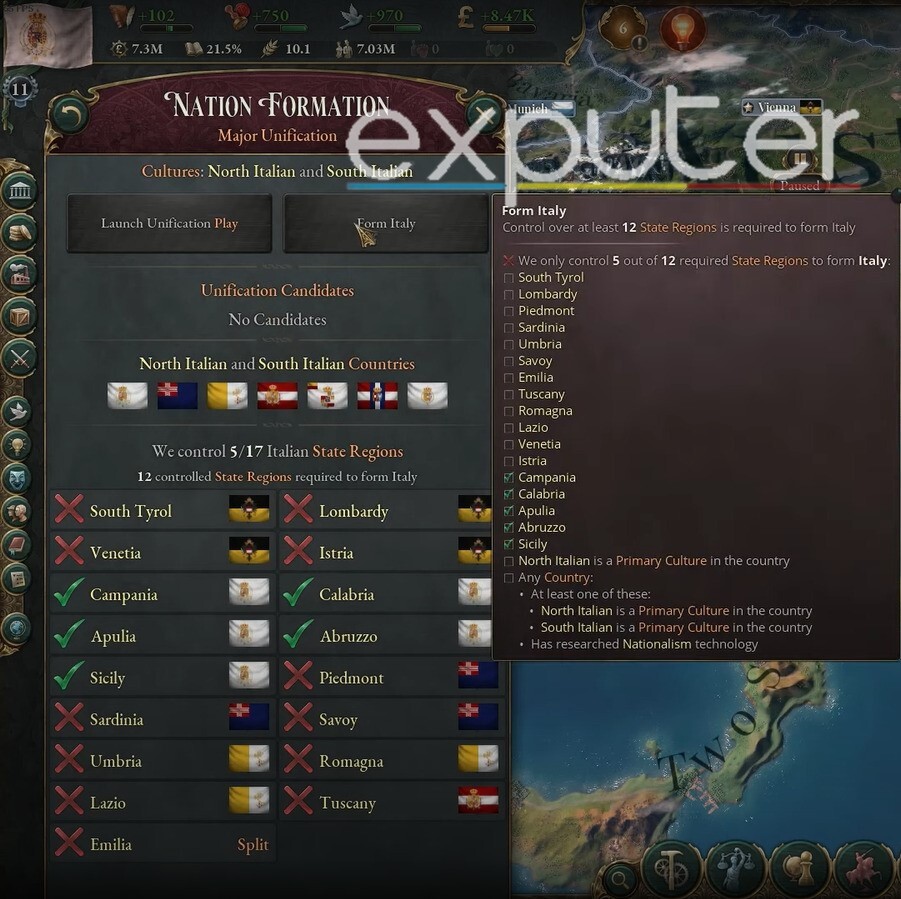
The unification candidates in Victoria 3 refer to the nations that aim to consolidate the powers behind the nationalist movements that I mentioned earlier, all under the guise of a single nation. If a country wants to be a unification candidate, it must have the rank of a major power at the very least. This rank pales in comparison if there are other unification candidates present with greater ranks, such as great powers.
At any given moment, there can be three unification candidates at the max. In the case that there are more than three candidates available, the top three from them are chosen. These are chosen on the base of their prestige and social ranking. Similarly, it is also possible that there is no unification candidate. This could be because the unification candidates do not meet the minimum ranking requirements to be considered.
Support Of Other Candidates
In the unification process, nations that don’t qualify as candidates are replaced by others. Once a nation becomes a unification candidate, it can receive support from non-selected candidates. Notably, only nations sharing a primary culture with the unification country are permitted to back unification candidates.
This support holds strategic importance. Unification candidates can hold land controlled by supporting nations to meet the required number of integral state regions. In simpler terms, if a supporting nation backs a candidate lacking the necessary integral state regions, the candidate can effectively control the regions of its supporters.
Diplomatic Plays
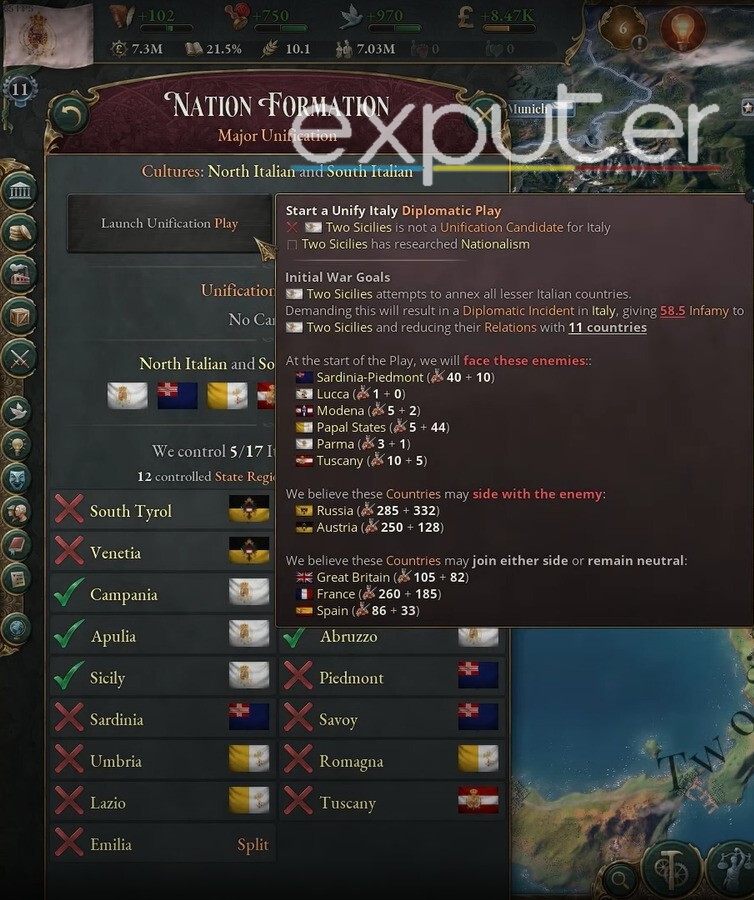
Unification candidates have access to diplomatic plays, which are National Leadership and Unification options, adding depth to the diplomatic aspect of the game. These diplomatic plays are historically accurate and play a significant role in determining the dominant contender for unification.
National Leadership:
- National leadership is a diplomatic option used when there are multiple unification candidates.
- It involves one candidate challenging another through a war to establish the dominant contender for unification.
- Supporting nations can influence the chances of success in this process.
- The losing candidate, eliminated through this process, cannot be a unification candidate again.
- However, it doesn’t prevent the nation from seeking other means, such as war, to achieve unification.
Unification:
- Unification is a diplomatic option that arises when only one unification candidate remains, either because there was only one candidate from the start or others have been defeated.
- It allows nations with the same primary culture as the unification country, controlling integral state regions, to participate.
- Supporting nations back the unification candidate, while all others oppose, regardless of their previous affiliations.
- Interested nations can interfere in this diplomatic play.
- The attacker aims to annex all nations on the target list.
- Even if you’re not a candidate, supporting one fosters friendlier relations with them.
Other Victoria 3 Tips
And that is all you need to know about unification and unification candidates in Victoria 3. There are certain conditions that must be met for a country to be able to unify. The same is also true for a country to be a unification candidate. It depends on the players on which plays they choose to go with in order to perform unification.
You will come across many instances in Victoria 3 when you need to perform unification. In case you are not satisfied with how the game looks, I have a solution for you. Don’t forget to check out our detailed guide on the best mods in Victoria 3 where we have listed the top 10 popular ones for you to try out. This will enhance how the game looks and plays out.
With that, you should be all set to manage your nations in Victoria 3. Check out our beginner’s guide in case you are a new player. If you want a more in-depth guide to some of the mechanics in the game, be sure to check out our Victoria 3: War System, if you are interested in the warfare aspect.
Want to know more about the trade center in the game? Check out our Victoria 3 Trade Center guide for that. If you want to learn more about the trade routes then check our guide on that as well!
Did you find the information that you were looking for? Let me know about it in the comments below!
Thanks! Do share your feedback with us. ⚡
How can we make this post better? Your help would be appreciated. ✍
